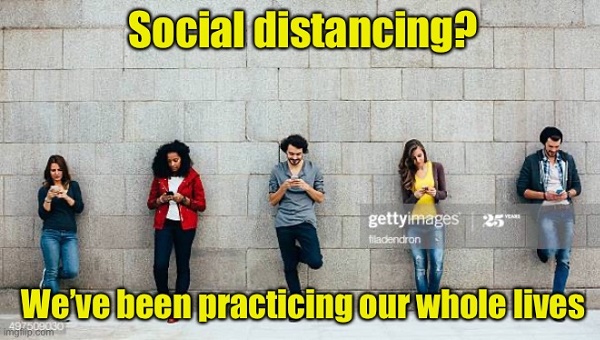Exploring Networked Identities: Reflections by Students During Lockdown
The problem with memoji and Facebook Avatars is that they assume that either the digital can fully replace the physical with no loss whatsoever, or that digital is indeed the only real realm there is.
Student Natalia Stanusch
 When the Italian government issued an order for the entire country to go under a strict lockdown on March 9, 2020, in an attempt to contain the Covid-19 pandemic, people had to get creative to get on with their personal and professional lives. During the quarantine, Communications Professor Donatella Della Ratta, who teaches, among other things, a course called ‘Selfies and Beyond: Exploring Networked Identities’ found herself having to rethink the way in which she conducted the class.
When the Italian government issued an order for the entire country to go under a strict lockdown on March 9, 2020, in an attempt to contain the Covid-19 pandemic, people had to get creative to get on with their personal and professional lives. During the quarantine, Communications Professor Donatella Della Ratta, who teaches, among other things, a course called ‘Selfies and Beyond: Exploring Networked Identities’ found herself having to rethink the way in which she conducted the class.
The ‘Selfies and Beyond: Exploring Networked Identities’ course focuses on how identities and subjectivities are shaped in a networked environment, and how they, in their turn, shape culture, social dynamics and politics in everyday life.
Questions and reflections by students
Is social media helping us overcome the imposed ‘distancing’ of this crazy period? Marta writes, “Allegedly, this virus has robbed people of their social life due to social distancing, but has it, really? The truth is that social physical interaction was robbed by social media way before Coronavirus even existed.”
Does a crisis situation give us validation as humans? Sydney admits, “There is no longer excitement in quarantine. There was excitement in only having 3 days to evacuate from Italy, somehow. It felt like a movie, unscripted, and it gave me a purpose.”
Says Sophia, “I have found that recently I have become tired of the content which is available to me and have become quite frustrated, clicking off of movies and videos before the ending. I think Baudrillard’s thoughts concerning meaning and the constant flow of information could be applied in this situation as I have access to a vast amount of content, but at this point, the amount that I have consumed has caused all of it to become ‘boring’ to me and to lose its meaning.”
The evolution of emoji
A research paper called “I Present you with Myself: Facebook Avatars and Apple Memoji, or a Brief Account of the Evolution of Emoji,” written by Communications and Art History student Natalia Stanusch for the ‘Selfies and Beyond: Exploring Networked Identities’ course inspired an article published on the Institute of Network Cultures website.
 Natalia explains that the word emoji comes from Japanese and it stands for ‘picture-word.’ “They are visualizations of emotions and feelings, something which is lost in the disembodied online presence. Emoji thrive as the quintessence of online communication, being digital substitutes for both body and emotion. Emoji take the self out of the conversation by replacing it with a menu of yellow faces.”
Natalia explains that the word emoji comes from Japanese and it stands for ‘picture-word.’ “They are visualizations of emotions and feelings, something which is lost in the disembodied online presence. Emoji thrive as the quintessence of online communication, being digital substitutes for both body and emotion. Emoji take the self out of the conversation by replacing it with a menu of yellow faces.”
As emoji became more and more popular, variations started appearing, like bitmoji, “your own personal emoji.” Apple developed memoji, which are emoji that users can personalize to look like them. Similarly, Facebook developed avatars, or cartoon versions of themselves. “Emoji design our emotions just as memoji design our selves,” Natalia explained.
In the text, Natalia reflects on memoji, avatars, and the likes, which she calls personalized emoji, and says that they offer “a real-time catalogue of ourselves, where we can pick and choose our emotions, looks, identities.” According to Natalia, emoji “all look pretty much the same across different platforms and express the same emotions,” as up to 70% are used to express positive feelings.
The standardization of emoji was implemented by The Unicode Consortium, which includes, among others, companies like IBM, Microsoft, Apple, Google, and Facebook. “These companies not only decide how emoji look across different platforms and how they vary, but which emoji exist and which don’t,” said Natalia. It is possible to petition to include a new emoji, but the final decision remains in the hands of The Unicode Consortium. Emoji are also useful for companies like Facebook because they help the algorithms to categorize and classify data. The limited number of emoji reactions on Facebook, for example, makes it significantly easier for the algorithms to display content that the user may be drawn to.
Natalia concludes by posing some questions. “What are the consequences of substituting oneself with personalized emoji? What are its implications for the continuous human-tech merge? How might it intrinsically change the notion of sociality, emotions, communication, and human?”





